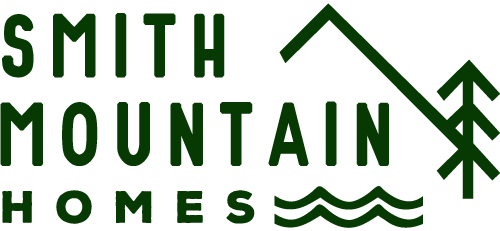 It is that frosty time of year again at Smith Mountain Lake. The time to batten down the hatches is when you are going farther south for the winter. On the other hand, if you enjoy the climate of Virginia all year round, you may still get some good information from this article by The Lake Channel.
It is that frosty time of year again at Smith Mountain Lake. The time to batten down the hatches is when you are going farther south for the winter. On the other hand, if you enjoy the climate of Virginia all year round, you may still get some good information from this article by The Lake Channel.
General Outdoors Tasks
- Check the roof for loose or damaged shingles and make repairs accordingly so you don’t have leaks in the spring.
- Seal or cover vulnerable windows to prevent breakage.
- Remove the boat, lift, jet skis, and other recreational items. After a thorough cleaning, check them for any damage. Jot down any items you need to purchase for repairs. It is easier to wait for a replacement part during the winter months than during the summer when you want to be enjoying things.
- If your boat is in the water, do not take it out of the water until you are ready to winterize it! Water remains in the lower unit of inboard/outdrives and plumbing until flushed in the winterizing process. This water can freeze and do damage to your boat in a matter of hours if the temperature drops below 32 degrees. If your boat remains in the lake, it is much slower to freeze.
- Blow out the sprinkler system if you have one.
- Rake up or mow any thick areas of leaves covering grass to prevent mold from growing on your grass in the spring.
Heating Systems
- Electric heating systems require no maintenance other than shutting off the power to the heating units.
- For hot air heating systems turn off the burner emergency switch
- Drain humidifier, which is usually located on the furnace.
- Forced hot water and steam systems: Drain all water in the system unless the liquid contains anti-freeze. It is wise to have this type of system drained by a plumber unless you are well informed on the procedures necessary.
- Winterize your summer home as you do your winter home. To help conserve energy when the home is not occupied, install a low-heat thermostat. By doing this your home could be maintained at about 40° F. without a freeze-up, rather than at 55 F. which is the lowest temperature at which most thermostats can be set.
Water Tasks to Prevent Broken Pipes and Leaks
- Disconnect hoses from outside pipes to prevent freezing, swelling, and breaking of pipes.
- If you are turning the heat off, shut off water systems by turning off the pump or shutting the valve if on city water. Drain the pressure tank. Check for traps in these locations: kitchen sinks, bathroom sinks, bathtub and/or shower drains, toilets, washtubs, floor drains, and maybe a sump pump.
- Open all faucets.
- Break a union close to the valve so water will drain out clear to the shut-off valve.
- Drain the pump and run a second or two to be sure all water is out of lines from the pump.
- Flush toilets and dip all water out of the flush tank.
- Be sure to drain flexible spray hoses in showers and sinks.
- Drain water softeners so water will drain back from soft water pipes and controls. Brine tanks will probably not freeze.
- Drain water heaters. Determine whether you need a Freeze Alarm. This is an alarm to alert home and cabin owners before pipes freeze. It automatically calls up to three numbers to warn of a drop in temperature at a remote cabin or home.
Washer and dishwasher
- Water left in hoses and internal components can cause damage when it freezes. Shut off the water supply to the clothes washer. Remove and drain inlet hoses. Clear the water valve by setting the timer for the filling cycle. Press the warm water button and run the machine for a few seconds. Drain water from the drain hose. Disconnect the electrical supply.
- For a dishwasher, remove the inlet and outlet connection to the valve. Operate the valve to remove any water. Remove the drain hose from the pump and drain. Disconnect the electrical supply.
- It is also a good idea to clean the equipment and protect the finish with a coat of appliance polish.
Sewage system
- Force as much water as possible out of traps with a plunger.
- Add Windshield Washer Fluid to sink traps and to all toilet bowls.
One last tip. Take some pictures of the lake and post them on the refrigerator at home or work, that way, even though the lake home is closed, you can always take a quick peek at what you have to look forward to next spring.
Thanks to The Lake Channel for this helpful article.


